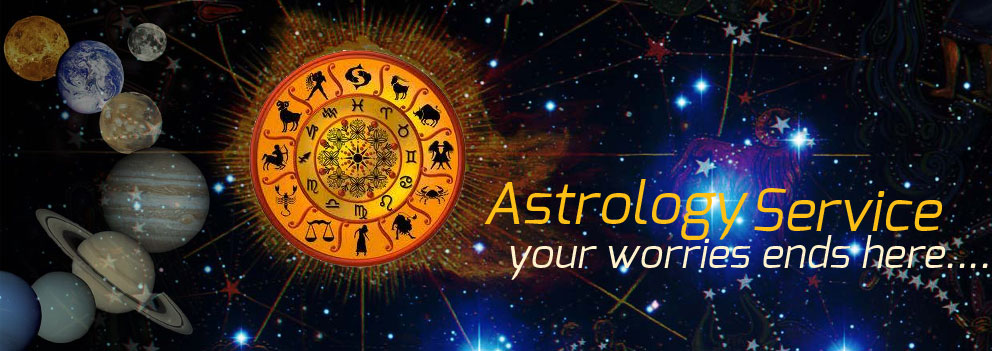Hindu Astrology
What the world knows as Hindu Astrology or Vedic Astrology, Indians simply call it Jyotisha. The word Jyotisha means "the science of light" in Sanskrit. It is in essence a time-tested, ancient art of accurately predicting the future.
There are primarily three branches of this art :
- The traditional Indian astronomy that predicts the movements of stars and planets.
- The art of predicting major events that will befall a country such as war or earthquakes.
- The art of predicting a person's future course of life, through a thorough study of his natal horoscopes.
- The Hindu astrology is also known as the Vedic astrology or Indian astrology.
The origins of the Hindu astrology is dated as far back as 6500 B.C.
The three main components of the Hindu astrology are the Nine Planets (Navagrahas: In the Sanskrit language), the twelve Signs (Rasis), and the twelve Houses (Bhavas). "The positions of the planets in the signs and houses are depicted in what is called the Horoscope."
Moon (Chandra):
It is significant to note that the Moon takes the position of planet in the Hindu astrology. We all know the crucial role our mind plays in our lives. Mind creates our reality. Moon is used in the Hindu astrology as the representation of the human mind.
Sign (Rasi), Birthstar (Nakshatra):
The twelve constellations or the zodiac signs called the Rasis are also further divided into twenty-seven (27) parts, known as the Birthstars (Nakshatras) or the Lunar mansions. The Birthstar (Nakshatras) of a person is the star in one's horoscope where the Moon is placed. Similarly, one's zodiac sign (Rasi) is the sign in which the Moon is found in one's chart.
Houses (Bhavas):
All of the Houses combined are representative of the whole of our life, with all its experiences. Its twelve parts are indicative of the twelve areas that make up our life. Each of the houses belong to one of the four qualities of life. They are, Purpose (Dharma), Material acquisition (Artha), Desire (Kama) and Spiritual liberation (Moksha).
Each of the components are archetypal energies with unique meaning attributed to each one of them. The dynamism of each of these energies (eg. Planet, Sign, Planetary movement) and how to interpret them along with the interactions between them, is what makes the vehicle of astrology capable of directing one's life.
The Hindu Astrology is so thoroughly laid out that is also known as the predictive astrology.
Hindu Astrology in India is popularly known as Vedic Astrology. Jyotish is the study of the planets,the word Jyotish from the Sanskrit word jyotish meaning light, heavenly body.
Hindu Astrology recognizes the existence and influence of collective, cosmic and spiritual levels of consciousness which lie beyond our surface and personal mind and which modern psychology is only beginning to explore.
Hindu astrology interprets are the things that it sees in to the future of a person as shaped and determined by his previous Karma or past life. A person's future and previous Karma are both indicated by the positions and the movements of the planets and other heavenly bodies at the time of that person's birth.
Making Predictions :
The Hindu Astrology believes each of the heavenly bodies to have a particular function. While it takes the sun to be the primary life force, it takes the moon to be the one influencing the fertility cycles. Vedic astrology is believed to be a branch of science for it takes the magnetic field and gravitational pull between the heavenly bodies and planet earth to affect the latter physically. And this very fact acts as the prime basis of its calculation.
Although both Vedic astrology and Western astrology recognizes twelve zodiac houses, the two uses different yardsticks to calculate the zodiac signs of different individuals. Unlike Western astrological predictions which are calculated upon the solar charts, jyotisha is calculated upon lunar charts.
While the former depends upon tropical zodiac, the latter makes use of sidereal zodiac. The horoscopes are prepared by studying the planetary position (graha), the exact location of the stars (nakshatra), the zodiac houses (rashis), the planetary periods (dasas), the planetary aspects (drishtis), the planetary combinations (yogas).
Using these information a chart is drawn which is believed to be able to accurately predict matters of family and relationship (Kama), finances (artha), career (dharma), spiritual salvation (moksha) and physical health (arogya).
Ayurveda and Hindu astrology are closely related aspects of Vedic science.
